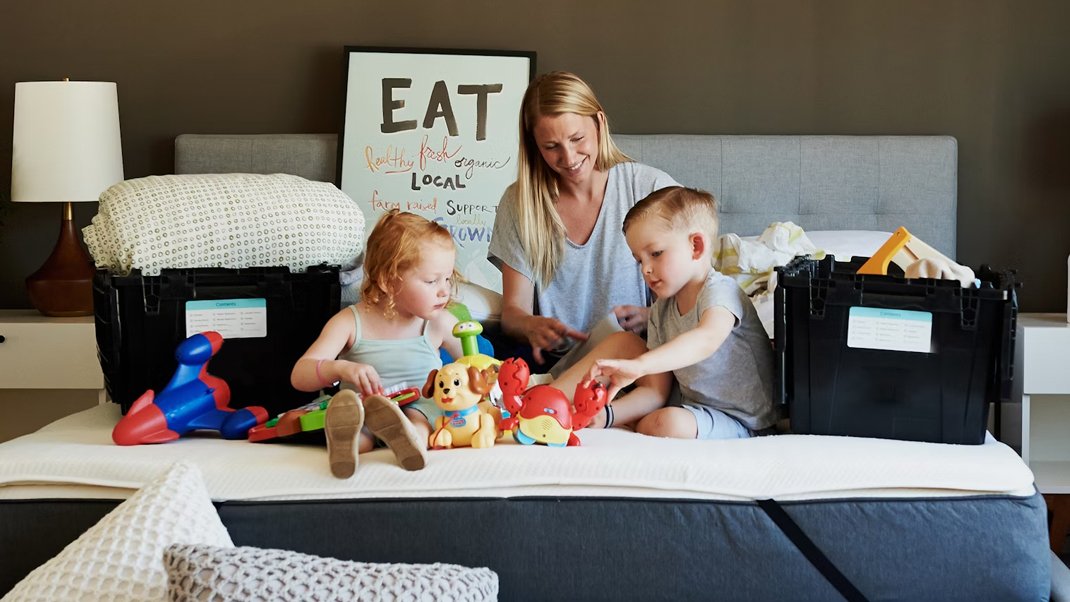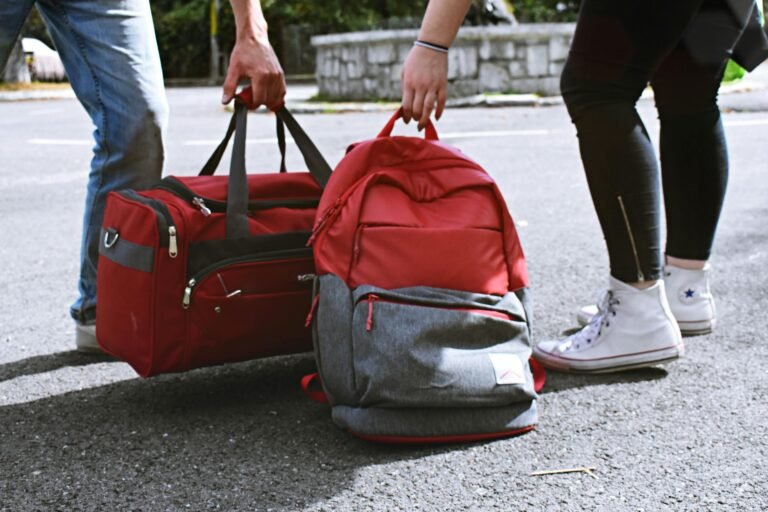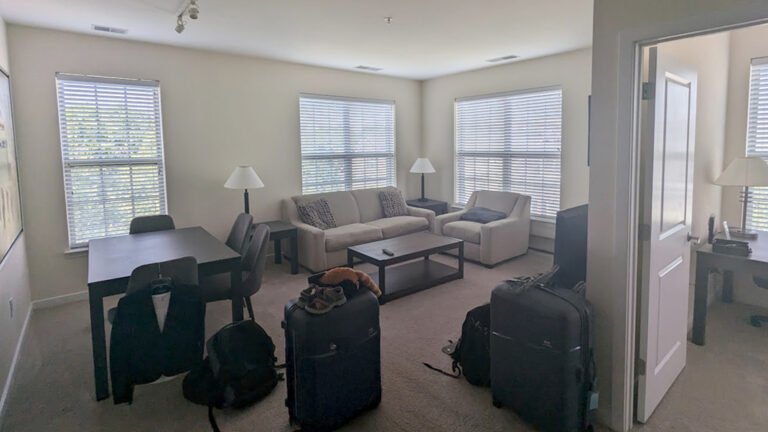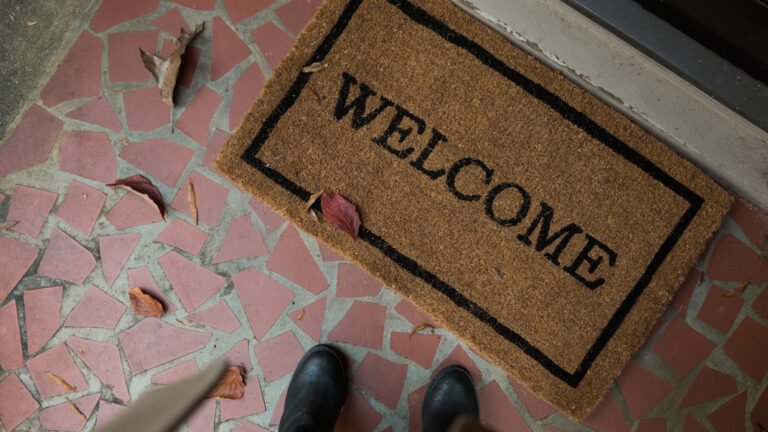Mastering the The Art of Expat Nesting: From Welcome Kit to UAB & HHE
Full transparency: This site uses affiliate links, which means I may get a small kickback if you buy something after clicking one. Think of it as a small way to support The Expat Essentials and keep the helpful content coming your way. It doesn't cost you anything extra, and we only recommend products we believe in!
Okay, deep breath! We’re diving into the extraordinary, sometimes wild, world of making a new place feel like home when “home” changes every few years. It’s an art form, and we expats get a lot of practice with it, whether we want it or not!
The Relentless Rhythm of Moving and the Need to “Nest” Quickly
So, here you are again. Regardless of the distance, the flight feels like a blur, or maybe the drive was epic. You’ve arrived at your new post. You’re standing in a new house or apartment, and it’s… well, it’s a space. It might be empty-ish, or maybe it’s full of furniture that isn’t yours yet. There are boxes on the way. You might not have seen or thought about so many boxes for months. It’s exciting, sure, a new adventure! But if you’re anything like me, there’s also that little voice in your head whispering, “Okay, how fast can we make this feel like home?”
That feeling? That urgency? It’s the need to nest. And for us, living this globally mobile life, learning how to nest fast isn’t just about personal preference; it’s crucial for everyone’s sanity, especially if you’ve got kiddos running around trying to figure out their new corner of the world.
This expat journey, particularly for Eligible Family Members (EFMs) and their families, means embracing a rhythm of arrival, unpacking, settling, and packing it all up again. It’s a unique cycle, and getting good at the “settling” part makes all the difference in how quickly you feel comfortable and functional.
Our moves often involve a few distinct stages of “stuff” showing up, right? There’s what you bring in your personal luggage (your most immediate comforts!), the Welcome Kit provided when you get to post (essential survival gear!), the Unaccompanied Air Baggage, or UAB (your carefully chosen essentials that arrive relatively quickly), and then the big one, the Household Effects, or HHE (everything else, arriving by sea, eventually). Understanding these stages is key to a suitable nesting strategy. You simply can’t wait for the HHE to feel settled; you gotta work with what you get first.
Immediate Comforts: Luggage and the Welcome Kit – Your First Line of Defense
Let’s start with what’s likely already with you or arriving the same day you do: your luggage and, if you’re lucky, that Welcome Kit. Think of your luggage as your absolute first line of defense in the nesting game.
Packing Your Luggage Strategically
When packing our suitcases for the move, I’m not just throwing in clothes and toiletries willy-nilly. Oh no. I’m strategically selecting those few, precious items that will instantly inject a sense of “us” into a sterile space. What goes in there?
For us, it’s things like our favorite pillowcases—maybe they have a fun pattern or feel extra soft. Putting those on the bed the first night? Instant comfort zone achieved. For our kiddo, it’s that absolute must-have stuffed animal (or maybe five; let’s be honest, sometimes you gotta pack backups!). It’s also lightweight pictures or small, meaningful trinkets that can sit on a bedside table or bookshelf immediately.
These aren’t just things but anchors to familiarity in a brand-new environment. When you unpack your suitcase, a little bit of home is already there. It makes a surprising amount of difference in those first few hours.
Maximizing the Welcome Kit Essentials
Then there’s the Welcome Kit. Ah, the Welcome Kit. It’s like a basic survival package provided at some posts, usually with essential kitchen equipment – think a few pots and pans, silverware, some plates, a microwave, maybe even a toaster or a coffee maker.
Bless the souls who put these together and keep them running! And let’s not forget the social sponsors—often amazing volunteers who might grab you some toilet paper, milk, bread, and maybe even show up with a comforting casserole on day one. Those folks are angels; leveraging this immediate help is essential for hitting the ground running.
Don’t be shy about accepting that offer for a quick grocery run for essentials like coffee, toilet paper, and maybe a bottle of wine to unwind after a long travel day.
The Welcome Kit Return: What You Need to Know
One super important thing about the Welcome Kit, though — something we learned the hard way at one post — is that you often have to give it back!
Usually, a few weeks after your main HHE shipment arrives. So, save the boxes that everything came in! And try your best to keep the items in good condition.
You don’t want to have to buy a used toaster because you dinged it up. It’s just one of those little expat logistical quirks you learn along the way, often through a minor mishap.
The Mighty UAB: Your Nesting Ninja Strike Force
Okay, so you’ve unpacked your luggage. The Welcome Kit is doing its job, providing essential functions, and you’ve survived the first few days. You’ve got the essentials covered. Next up is the UAB – the Unaccompanied Air Baggage. This is where your strategic packing really pays off for nesting purposes.
What to Prioritize in Your UAB Shipment
Depending on your agency or assignment, you usually have a weight limit for UAB, something close to 200 pounds per person. This is your crucial chance to get items you need relatively quickly, things that will make the space feel more like home, but that you couldn’t fit in your suitcases.
Think carefully, strategically even, about what goes in your UAB. It’s your nesting ninja strike force, designed for immediate impact and comfort before the bulk of your belongings arrive.
Puzzles (our favorites lately) and games are a must-have in the UAB. They’re often lightweight (that’s part of the UAB game!), and having a few board games or a deck of cards unpacked means you can have a family game night within days of arriving, creating a sense of normalcy and fun amidst the chaos.
We also pack more pictures in the UAB – lightweight framed photos, prints, or postcards that we can put up immediately.
Beyond sentimental items and entertainment, think practical. A small toolkit with a hammer, screwdriver, and some pliers is invaluable for fixing or assembling things that might arrive early.
Don’t forget a few favorite cooking utensils or spices. These are going to become necessary if you plan on cooking at all before your HHE arrives. Everyone I speak with says that kitchen items are what they wish they had packed more of in their UAB. They can be heavy, but you will usually be grateful you sacrificed some clothing weight for a decent knife or your favorite spatula. It will help make life and nesting easier in those early weeks.
Love coffee? If an espresso machine is essential to your morning sanity (it is for mine), and you have the UAB weight, bring it! Does sewing bring you joy and relaxation (it does for my wife)? Bring the sewing machine if you can swing it.
Books are great, too — having a few comfort reads on a shelf can make a room feel more inviting and less like a temporary space.
These things make a place feel like yours and allow you to continue your hobbies and routines.
Please remember to pack chargers for all your devices (seriously, pack these strategically in an easy-to-find UAB box!).
Unpacking Your UAB for Instant Impact
When your UAB boxes arrive, make unpacking them the absolute priority, even before you arrange the furniture perfectly. These boxes contain items specifically chosen to help you feel settled quickly. Open them, remove those key items, and start putting them where they belong.
It’s a tangible, empowering step in making the new place yours and earnestly starting the nesting process.
Making Walls and Spaces Happy: Quick and Damage-Free Decorating & Furniture Fun
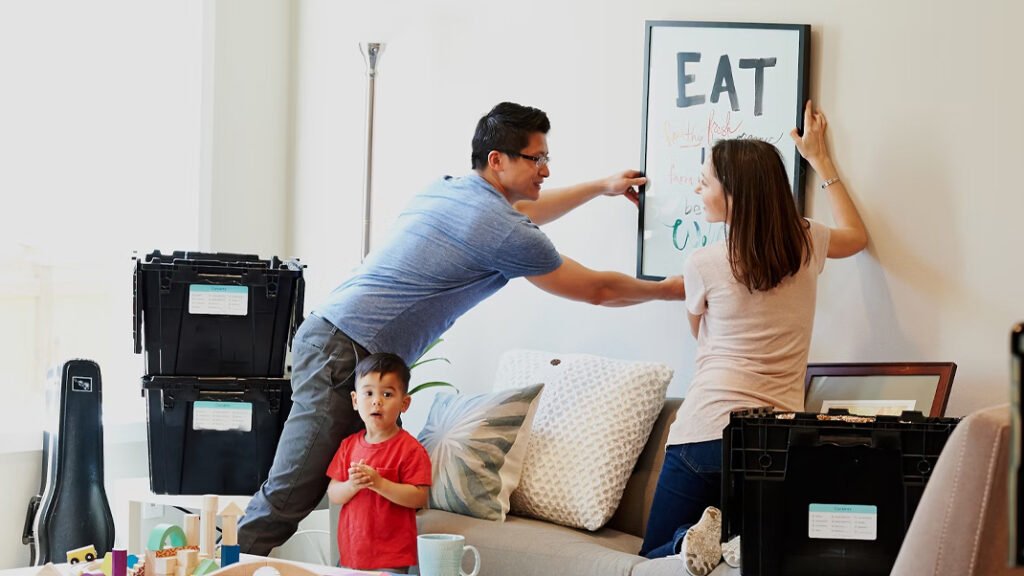
Alright, let’s talk about the walls and the furniture. This is where the “art” of nesting truly comes in, especially in furnished housing, which is super common in the expat world. You walk into a place, and it’s often filled with solid, heavy furniture. Drexel Heritage, Ethan Allen… you know the kind. It’s built like a tank, which is excellent for frequent moves and holds up well, but maybe not always screaming “your personal style.” And yeah, depending on the post and the specific pieces, it can sometimes feel a little… institutional or dated.
Working with Provided Furnished Housing
Here’s the deal: this furniture is expensive for the government to procure and maintain. Even if it’s not your taste, it’s valuable property, and taking care of it is part of the gig. Consider investing in neutral, washable sofa covers, especially if you have young kids or pets. They protect the furniture from spills and wear and tear, and they can instantly change the feel of a room, giving it a cleaner, more personal look. Plus, you can take them with you to the next place.
You’re not alone in hating it. There are even Facebook groups, like “Life As a Drexpat,” where people share ideas and commiserate (often humorously!) about making that specific style of furniture work for them. That pineapple lamp or giant floral sofa is all part of the creative challenge of expat decorating!
Damage-Free Wall Decor: Command Strips and Painter’s Tape
Now, the walls. Bare walls can make a place feel temporary and cold. But you often can’t just start hammering nails everywhere, or you might face charges when you move out.
This is where Command Strips become your absolute best friend. I don’t know what I’d do without them in furnished housing. They’re a game-changer for hanging pictures, mirrors, and even lighter shelves, without putting holes in the wall. They also have hooks for hanging things like brooms in a pantry or toiletries on the back of a cabinet door. Just follow the instructions: clean the wall surface with rubbing alcohol, press the strip firmly, and wait the recommended time (usually an hour) before hanging anything. I’ve learned the hard way, with a picture frame taking a tumble because I was impatient!
Painter’s tape is your hero for kids’ artwork, postcards, or creating fun, temporary displays. It’s colorful, easy to use, and peels off without damaging paint (usually!). You can make cool montages of postcards from previous posts or your travels, or hang up all the masterpieces your little artists create at school or home.
Don’t forget magnets for the fridge! It seems small, but having a place to put up pictures, school notices, or just fun magnets from places you’ve visited instantly makes a kitchen feel more lived-in and like a family hub.
Adding Warmth and Personality with Textiles
Adding textiles is another quick win for making a space feel cozier and more personal. If you packed colorful cushion covers, table runners, or throw blankets in your UAB or luggage, get those out! They instantly add texture, color, and warmth to a room, covering up potentially drab or worn furniture and making the space feel more inviting and less generic.
Creating Calm and Routine Amidst Chaos (Especially for Kids)
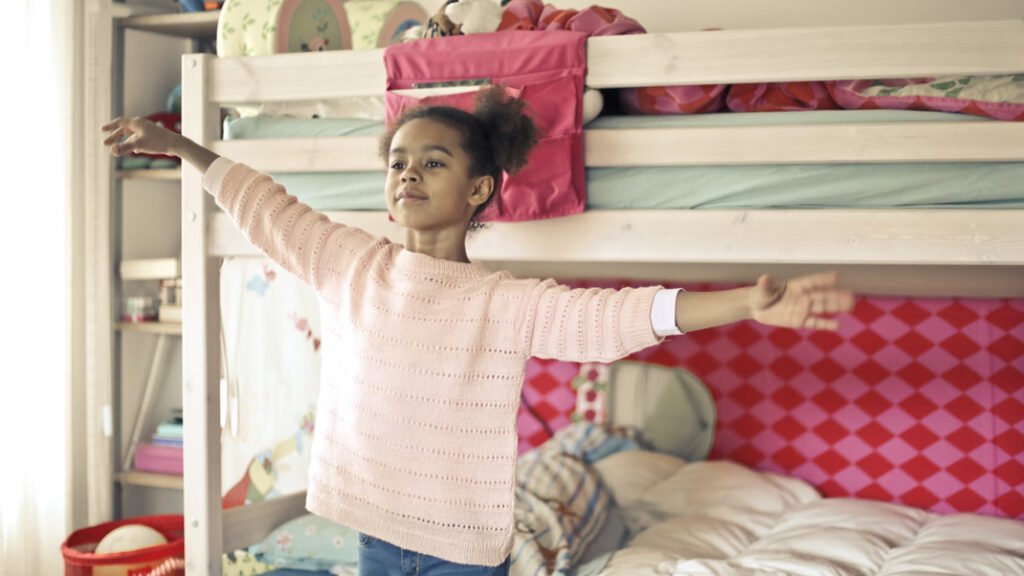
Those familiar with my articles on this topic know I focus heavily on ensuring my daughter’s transitions go smoothly. I believe her comfort eases everyone’s process in a positive and supportive way.
While physically unpacking and arranging, establishing a sense of calm and routine is just as important, if not more so. This is vital for kids during a move.
Everything familiar – their school, their friends, their usual activities, even the layout of their home – has been packed away or is in transit. Predictive routines are an essential anchor in that storm of change and uncertainty.
The Importance of Routines for TCKs
Routines are essential for everyone, even adults, but they are exceptionally vital for our Third Culture Kids (TCKs) navigating a constantly changing world. While routines can benefit anyone, their impact is incredibly profound for TCKs who often experience frequent moves, cultural shifts, and the challenges of saying goodbye to familiar places.
Routines offer stability amidst constant change, helping TCKs feel more grounded and secure. The predictability they provide can also help TCKs manage their emotions more effectively, reducing anxiety and stress, making it easier for children to navigate the challenges of frequent transitions.
Consistent routines also help children develop a sense of time, manage their day, and can even contribute to identity formation by providing consistent rituals and habits.
Extra Support: Routines for Neurodivergent Kids (ADHD/Autism)
For children (and adults) who are neurodivergent, such as those with ADHD or Autism, routines aren’t just helpful; they can be crucial for navigating transitions and feeling secure. Moving can be particularly challenging for these kids because it disrupts established patterns and sensory environments that provide comfort and predictability.
Structured routines provide a roadmap for their day, reducing anxiety by clarifying expectations. Visual schedules, like charts with pictures or words showing the sequence of activities, can be incredibly effective tools. They help children understand what’s happening next, reducing uncertainty and potential behavioral challenges from unexpected changes.
Consistency in bedtime routines, meal times, and even the morning preparation sequence can provide a vital sense of stability. While flexibility is essential for all kids, changes to routine often need to be introduced gradually and with clear communication beforehand for neurodivergent children.
Resources like the Child Mind Institute offer valuable insights into supporting children with ADHD through transitions, emphasizing preparation and maintaining structure.
Similarly, organizations like the Autism Society highlight the importance of predictability and routine for individuals with Autism, especially during times of change (Note: This link provides general info on early childhood, but the principle of routine importance is a core tenet for Autism support across ages).
While finding expat-specific resources for neurodivergent kids can be challenging, the core principles of routine and structure remain universally beneficial and are amplified during the moving process.
Setting Up Key Functional Spaces Quickly
Set up the key functional areas that support your family’s daily rhythm as soon as possible. Get the kitchen working with your Welcome Kit and UAB essentials so you can prepare simple meals. Even if you’re eating on paper plates initially or having picnics on the floor, having a designated spot for meals, even if it’s just the coffee table or a folding table, helps create a sense of normalcy and togetherness.
Make the sleeping spaces comfortable and inviting. Get the beds made with familiar sheets from your luggage or UAB, and arrange the room so it feels safe and cozy.
Establishing Essential Routines for Stability
Establishing simple routines right away is key to restoring a sense of stability. Stick to regular mealtimes, even if they’re simpler than usual. Maintain bedtime routines—story time, bath time, whatever your usual rhythm is. Find a spot for homework or quiet time, even if it’s just a corner of the living room with a small table.
These small, consistent acts of routine building signal to everyone, especially the kids, that even though the location is new and many things have changed, the core of family life and its comforting predictability remain constant.
Consistency is key, but remember to be flexible and willing to adapt routines as your child grows or circumstances change.
Involving Kids in the Nesting and Routine Building Process
Prioritize sorting out the kids’ rooms with their UAB items as quickly as possible. Let them help unpack their own boxes and decide where their favorite toys, books, or blankets should go. Giving them agency in setting up their space helps them feel more in control and settled in their new environment.
Their room is their sanctuary, and making it feel like theirs quickly is a big win.
When building routines, involve your child in the process! Let them have a say in their daily flow to foster a sense of ownership. Listen to their preferences and empower them to choose within the routine’s framework.
Visualizing routines with charts or pictures can also help kids understand the sequence of events.
Routines and Raising Resilient TCKs
Creating strong routines isn’t just about managing the day-to-day chaos of moving; it’s a fundamental building block for raising resilient Third Culture Kids.
In a life that often provides a lot of comfort and privilege, intentional strategies are needed to help kids develop the grit and adaptability they’ll need to navigate future challenges. Routines provide a predictable structure that frees up mental energy for kids to process the changes around them and develop those crucial coping skills.
Consider This Post:
I explore this idea of balancing a comfortable life with the need to build inner strength in my free seven-day email series, “The Paradox of Privilege: Raising Resilient Kids in a Comfortable Life.”
Each day, you get a simple, actionable strategy focused on a key skill for building resilience in your child, from embracing failure to teaching financial responsibility and requiring contribution.
If you’re finding that creating stability through routines is helping your TCKs, this series is valuable for building on that foundation of resilience.
The Great Unpacking Debate: Movers or DIY?
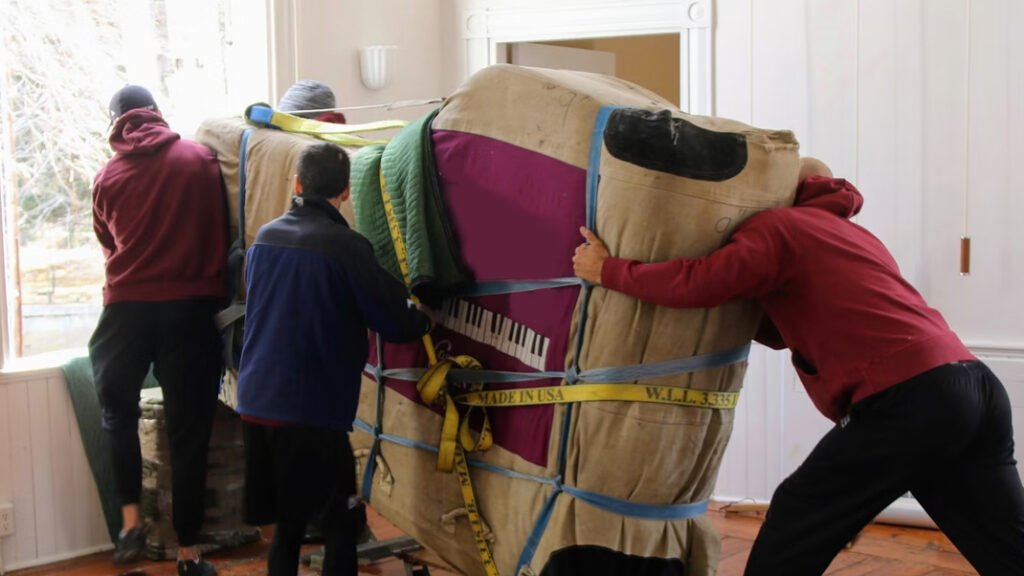
This is a hot topic in the expat community, and there’s no correct answer.
It’s the tremendous unpacking debate: Do you let the movers unpack your UAB/HHE, or do you tackle the mountain of boxes yourselves?
Both have pros and cons, and honestly, you have to do what works best for your family’s sanity, energy levels, and priorities at that particular time. There’s no judgment here!
Pros and Cons of Letting Movers Unpack
Having the movers unpack is tempting, especially after a long move.
They’re efficient, and they’ll get boxes emptied quickly. The initial chaos will be over faster, and the empty boxes will disappear, which is a huge plus.
However, the big downside, which we’ve experienced in various forms, is that things often end up in… interesting places. We’ve heard tales of kitchen items in the bedroom, books in the bathroom, clothes in the kitchen cabinets, you name it.
If you let them unpack everything, you might spend the next few weeks hunting for things you need.
If you are going this route, keep a watchful eye on what they’re doing and where things are going, and do your best to note anything broken or missing before the movers leave and you sign off on the inventory and condition reports.
Why We Choose to Unpack Ourselves (and Tips if You Don’t)
We usually choose to unpack ourselves. It’s a tremendous amount of work, don’t get me wrong. Depending on the shipment size and your schedule, you’re surrounded by boxes for days, maybe weeks, or months.
But the trade-off is that we know exactly what’s in each box (because we unpacked them strategically!), and we can put things away immediately where they belong.
There will be no confusion about why there is underwear in the tea cabinet! It will feel more organized in the long run, even if emptying every box takes longer.
The potential downside is that if anything is broken or missing, dealing with claims can be more complicated if you discover it after the movers have left. You’ve signed off confirming the arrival and condition of the shipment. (Thankfully, nothing significant has broken for us…yet!)
If you decide to have the movers unpack, a tip from a few seasoned expats is to ask them to unpack everything into one central room, like the living room or a large spare room. This creates one contained zone of chaos and forces you to deal with it and put things away relatively quickly, rather than having half-unpacked boxes lingering in every room for ages.
Ultimately, weigh the pros and cons for your family, your energy levels, and your situation at post. There’s no single correct answer, just the one that works best for you!
HHE – When the Big Shipments Arrive
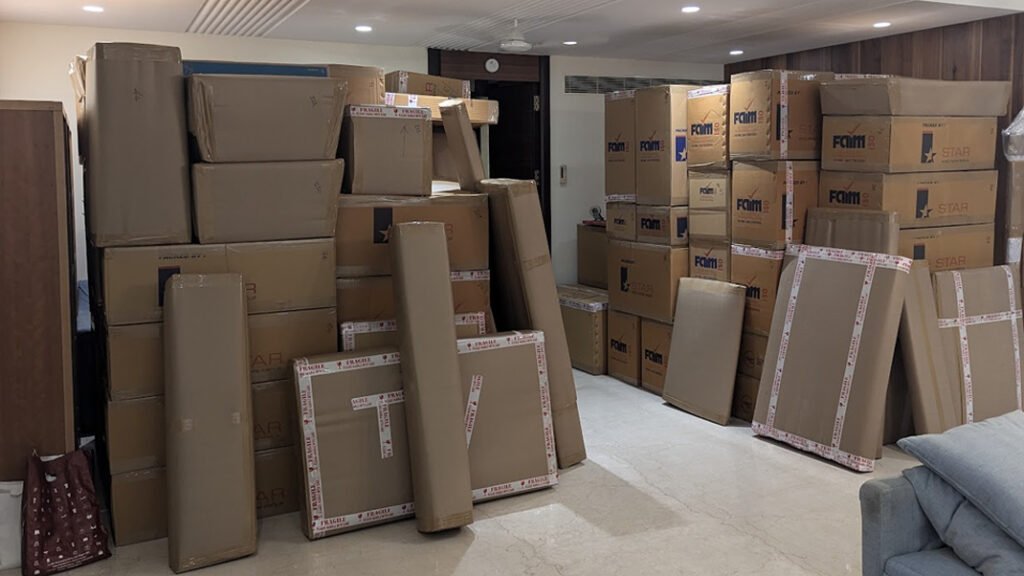
When your HHE (Household Effects) finally arrives, it’s almost like a second move! Hopefully, you’ve already felt somewhat settled with your UAB and initial nesting efforts. You’ve got routines established, the immediate comforts are in place, and the house is starting to feel more lived-in.
Remember, the arrival of HHE is about integrating the rest of your belongings – the furniture you shipped, the bulk of your kitchenware, your extensive book collection, seasonal clothes, etc.
It’s about refining your space and fully setting up your home. Don’t feel pressured to sort it all out in a day (or even a week!). It’s a massive undertaking. Tackle it room by room or box by box, as your time and energy allow.
Your earlier efforts started the goal of feeling “home,” and the HHE adds the finishing touches and full functionality.
Leveraging Post Resources for Nesting
Once your HHE has arrived and you’re starting to get things put away, don’t forget about the resources available at post. Sometimes, some services can make the final touches of nesting much easier.
Utilizing the Maintenance Service for Hanging
One fantastic service often available, though it is typically a one-time visit, is having the maintenance person help you hang pictures and other items. This is a golden opportunity!
Even if you’re a handy person back home, dealing with unfamiliar walls, potential wiring issues, or just wanting to avoid making holes you might have to pay for later, having the pros do it is smart. But be organized when they come. Have an idea of where you want things to go, and have the pictures, mirrors, or shelves you want hung gathered nearby.
Utilize this service! If they mess up the walls, fixing them is generally on them. If you mess up the walls, fixing them could come out of your pocket when you move out. It’s a practical way to make those walls feel less bare without the stress.
Adding Your Personal Touch with Paint
Another way to make a space feel like yours is with paint.
This isn’t always allowed, so you’ll need to check with your housing office at post first. But if it is, consider painting! You don’t have to paint the whole house. Even an accent wall in a living area or a bedroom can make a huge difference in how the space feels.
Be bold, be subtle, and do whatever makes you feel happy and at home.
You may have to pay to have it painted back to the original color when you leave, but for a few years of feeling more settled and having a space that reflects your personality, it’s often a small price to pay in the long run.
Temporary Decorating Ideas: The Painter’s Tape Rainbow and More
If painting isn’t an option, or even if it is, get creative with temporary decorations!
We have a tradition of adding a painter’s tape rainbow to our daughter’s room in every place she’s lived. It’s a simple, colorful way to personalize her space that’s easy to put up and take down and doesn’t damage the walls. We wrote a little about it in this article: Turning Temporary Housing into a Cozy Home.
Ideas like this can add personality without permanent changes, using painter’s tape, removable wall decals, stained glass window film, or even just leaning framed art against walls or furniture.
The Art of Nesting: Embracing the “Art” and Finding Home in the Imperfect
So, “The Art of Nesting” is about being intentional and strategic during those first few days, weeks, and even months in a new place.
✅ It’s about leveraging your resources — your luggage, the Welcome Kit, your UAB — to create comfort and familiarity quickly.
✅ It’s about getting creative with decorating in furnished housing and using handy, wall-friendly tools like Command Strips and painter’s tape, or even considering paint if allowed.
✅ It’s about prioritizing routine and creating safe, functional, and cozy spaces for your family, especially the kids, who need that stability.
✅ It’s also about utilizing the services available at post, like that maintenance person for hanging pictures.
❌ It’s not about having a perfectly decorated, magazine-ready home from day one. (Honestly, does anyone ever have that, expat or not? Probably not!).
❌ It’s about making the space feel like yours, a place where your family can relax, connect, and simply be.
✅ It’s about progress, not perfection.
Embrace the process, be kind to yourself when it feels overwhelming, and remember that “home” is more about the feeling you create within the walls and the people you share it with than the walls themselves or the furniture inside.
You’ve got this! You’re building resilience and a sense of home, one box and one Command Strip (or maybe even a stripe of paint!) at a time.
Extra Resource:
Expat Moving Checklist – Luggage, UAB, and HHE
Moving overseas involves juggling different shipments. Here’s a quick checklist based on the Expat Essentials guide to help you decide what to pack in your immediate luggage, your Unaccompanied Air Baggage (UAB), and your main Household Effects (HHE). Remember, this is a starting point, and you’ll want to tailor it to your family’s specific needs!
Personal Luggage (Your Immediate Lifeline)
- Essential clothing for the first few days
- Toiletries and basic medications
- Important documents (passports, visas, orders, medical records, etc.)
- Chargers for all devices
- Favorite pillowcases or small comfort items
- Beloved stuffed animals or small toys for kids
- Lightweight pictures or small, meaningful trinkets
- A book or two for relaxation
Unaccompanied Air Baggage (UAB – Your Nesting Ninja)
- Games and puzzles for family time
- More pictures (framed or prints) and postcards for decorating
- A small toolkit (hammer, screwdriver, pliers)
- Favorite cooking utensils or essential spices
- Coffee maker or espresso machine (if essential and weight allows)
- Hobby items (e.g., sewing machine if weight allows)
- Comfort blankets or throw pillows
- A few favorite books
- Kids’ favorite toys and bedding for their room
- Painter’s tape and Command Strips
- Magnets for the fridge
Household Effects (HHE – The Main Shipment)
- All furniture (unless housing is fully furnished and you aren’t shipping any)
- The bulk of kitchenware (pots, pans, dishes, appliances)
- Extensive book collections
- Seasonal clothing and shoes
- Larger toys and sports equipment
- Decorations and art not sent in UAB
- Linens and towels
- Any items not deemed essential for the first few weeks/months
This checklist should help you think strategically about what you need to make your new place feel like home as quickly as possible!


